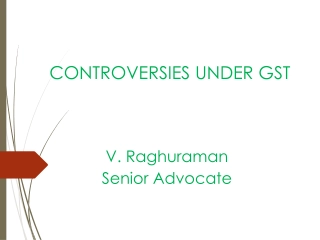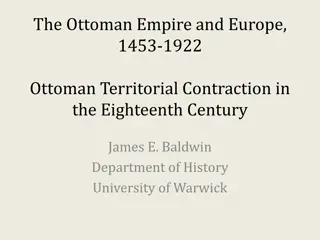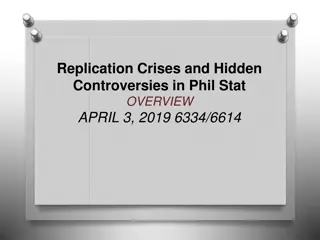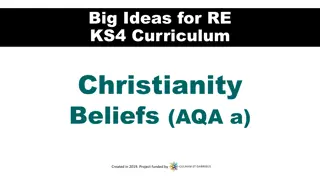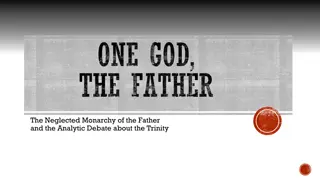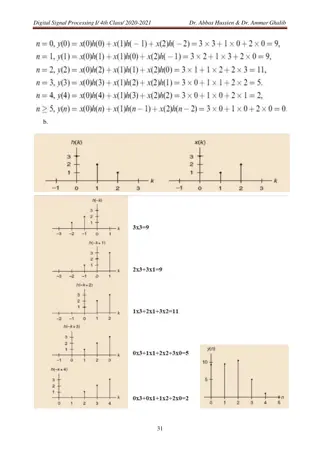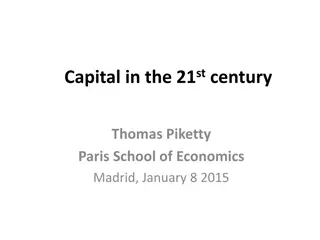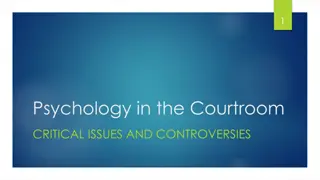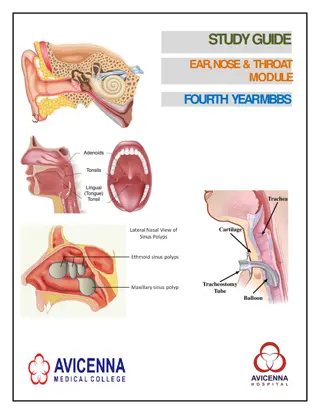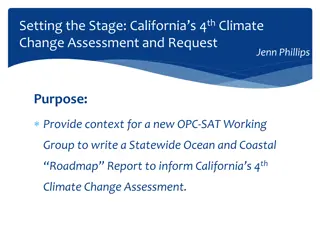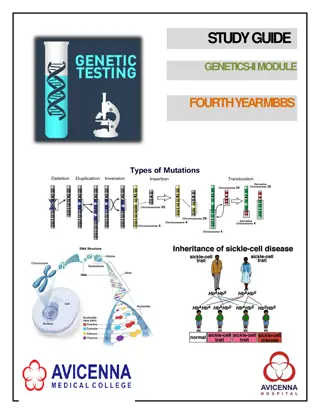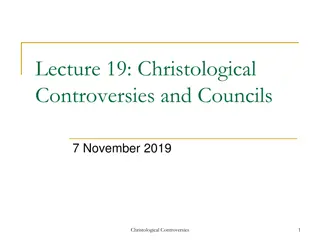The Christological and Trinitarian Controversies in the 4th Century
Explore the Christological and Trinitarian controversies of the 4th century centering around the nature of Jesus Christ, His divinity and humanity, and the Incarnation. Delve into key Scriptures and the significant role of figures like Athanasius in resolving these theological debates.
Download Presentation

Please find below an Image/Link to download the presentation.
The content on the website is provided AS IS for your information and personal use only. It may not be sold, licensed, or shared on other websites without obtaining consent from the author. Download presentation by click this link. If you encounter any issues during the download, it is possible that the publisher has removed the file from their server.
E N D
Presentation Transcript
Lecture 14: Nicaea and Athanasius 17 October 2019 Athanasius 1
Introduction Christological and Trinitarian Controversies Arius and Alexander (Bishop of Alexandria) Council of Nicaea Athanasius Life On the Incarnation Assignments 2 Athanasius
Background to Nicene Creed Council of Nicaea called by Constantine in 325 to resolve Arian controversy, bring unity to Church, and therefore unity to Empire Virtually all Eastern bishops and some Western bishops attended Bishop Alexander of Alexandria succeeded in routing the Arian bishops 3 Athanasius
4th Century Christological and Trinitarian Controversies Who was Jesus Christ? What was the relationship between His divinity and humanity? What happened at the Incarnation? Recall that earliest heresy denied His humanity (docetism) How to describe the relationship of the persons in the Trinity? Three Gods? One God with three aspects? Controversies used technical philosophical language Controversies hinged on proper interpretation of Scripture: Proverbs 8:22 ff Genesis 1-3 John 1:1-14 4 Athanasius
Proverbs 8:22-23 NIV 22 "The Lord brought me forth as the first of his works, before his deeds of old; 23 I was appointed from eternity, from the beginning, before the world began NRSV 22 The Lord created me at the beginning of his work, the first of his acts of long ago. 23 Ages ago I was set up, at the first, before the beginning of the earth. Douay-Rheims 22 The Lord possessed me in the beginning of his ways, before he made any thing from the beginning. 23 I was set up from eternity, and of old, before the earth was made. NAB 22 "The LORD begot me, the first-born of his ways, the forerunner of his prodigies of long ago; 23 From of old I was poured forth, at the first, before the earth. Notes [22-31] Wisdom is of divine origin. It is here represented as a being which existed before all things (Proverb 8:22-26) and concurred with God when he planned and executed the creation of the universe, adorned it with beauty and variety, and established its wonderful order (Proverb 8:27-30). Here that plurality of divine Persons is foreshadowed which was afterward to be fully revealed when Wisdom in the Person of Jesus Christ became incarnate. Note [23] Poured forth: the exact meaning of the Hebrew is uncertain; the expression must imply the equivalent of "born." The Hebrews liken the movement of air and of spirit to that of liquids. Septuagint The Lord made me the beginning of his ways for his works. He established me before time was in the beginning, before he made the earth. Read pp 615-616 in A Catholic Introduction to the Bible: The Old Testament. 5 Athanasius
Key Figures in Controversy Origen Strong support for monotheism and Trinity Strong support of divinity of Son Said Son was homoousia with Father; but three hypostses in Trinity Sabellius, presbyter, 3rd C, Rome Modal monarchist: one God, Father, Son, Spirit different aspects (modes) of one person Adoptionist Christology: Logos adopts Jesus Paul of Samosata, Bishop of Antioch, late 3rd Century Jesus was possessed of a special divine spirit, but a creature of God Sharp distinction between Word of God (Logos) and person of Jesus; Jesus linked to Logos by a special grace Arius, presbyter in Alexandria, 250-336 Studied in Antioch Jesus as Word, but Word created there was when he was not Wanted to firmly support monotheism Marcellus of Ancyra, d. 380 Strong opponent of Arius But accepted only one person in Trinity; accused of Sabellianism 6 Athanasius
Types of Arianism Arius: The Word, the Son created from the substance (ousia) of the Father Semi-Arianism: Son is like (homoiousia) the Father; opposed notion of homoousia because not in the Bible Neo-Arians (late 4th C): Anhomoions unlike; the Son is unlike the Father 7 Athanasius
Glossary of Terms Note terms have multiple meanings in their own language; very difficult to translate from Greek into Latin with same connotations (and then into English) Logosmuch richer in meaning than just word : logic, wisdom, rationality, language Ousia, Greek, essence, being Substance, from Latin substantia, what defines a thing as such; its essence; Greek equivalents are hypostasis; ousia Homoousia: of the same essence, but not in Scripture Homoiousia: of similar essence Physis: nature Hyposopon: person (but hypostatis can also mean person) 8 Athanasius
Hypostasis Literally means stand (stasis) under (hypo) Has connotation of fundamental or foundational; also essence of a thing; basis for a plan Paul: 2 Cor 9:4 and 11:17; confident boasting about Achaian s plan for a collection 9 Athanasius
Hebrews and Hypostasis Philosophically most sophisticated text in NT Quoted by Clement of Rome Heb. 1:3; 3:14; and 11:1 Heb 1:3; Son as the exact imprint of his (God s) being Heb 3:14 as steadfastness or confidence Heb. 11:1 The definition of faith Is it essence or confidence? Objective or subjective? Vulgate uses substance (essence); Luther translated it as confidence Pontifical grammatical analysis uses substance See Basil s Homily 38 10 Athanasius
Versions of Heb 11:1 RSV and NRSV: Now faith is the assurance of things hoped for, the conviction of things not seen. NAB: Faith is the realization of what is hoped for and evidence of things not seen [1] Faith is the realization . . . evidence: the author is not attempting a precise definition. There is dispute about the meaning of the Greek words hypostasis and elenchos, here translated realization and evidence, respectively. Hypostasis usually means "substance," "being" (as translated in Hebrews 1:3), or "reality" (as translated in Hebrews 3:14); here it connotes something more subjective, and so realization has been chosen rather than "assurance" (RSV). Elenchos, usually "proof," is used here in an objective sense and so translated evidence rather than the transferred sense of "(inner) conviction" (RSV). 11 Athanasius
Nicene Creed Based on various Rules of Faith Lex orandi, lex credendi; the law of prayer is the law of faith What the Church prays is what the Church believes Based on Scripture, but wanted to be philosophically precise Used a word not found in Scripture: homoousia According to Eusebius, Constantine approved use of homoousia In anathemas treated homoousia and hypostasis as equivalents Later councils will distinguish between them; hypostasis as person; hypostatic union 12 Athanasius
Arianism after Nicaea Continued to be a very potent heresy Also, politically well connected: Constantine may have been baptized by an Arian bishop His son, Constanstius, d. 360 took side of Arians; Sent Arian missionaries to Germany Alaric and the Goths who sacked Rome in 410 were Arian Christians His cousin, Julian the Apostate, d. 363 tried to return the Empire to paganism Of the claimants to Empire after Julian Valantinian I in West, pro-Nicene (although his mother was an Arian) Valens in East was a semi-Arian Finally settled with Theodosius the Great, Council of Constantinople, 381, promulgates Nicene-Constantinople Creed, What we now have Note structure of CCC 13 Athanasius
Life of Athanasius, c. 295-373 Known as The Father of Orthodoxy Bishop of Alexandria; opposed Arius s Christology Constantine wanted unity within his new religion, just as he wanted unity within the Empire Attended Council of Nicea 325 with Bishop of Alexandria (Alexander) After Council as Bishop of Alexandria, Athanasius played a major role in condemning Arianism; including homoousiain Creed, one in being with the Father However, Arius and Arianism remained popular Constantine eventually seemed to side with Arius; exiled Athanasius to Germany Eventually Athanasius returned to Alexandria and continued to fight for Nicene orthodoxy 14 Athanasius
Works of Athanasius Sermons, Letters, Treatises Life of Antony; may have been the most influential book during the Patristic period On the Incarnation Key points in Athanasius s arguments Liturgical practice of Church (i.e., ancient Baptismal creeds) important indicators of Truth to be believed: What the Church prays, the Church believes Emphasis on Jesus redemptive action; necessity for Jesus to redeem all aspects of our humanity what was not assumed, was not saved 15 Athanasius
Background On the Incarnation Addressed to a devout orthodox Christian, Macarus Intended to refute a variety of errors concerning Christ; Philosophy Judaism Christian heresies: docetism and Arianism Actually second of two books written against the pagans 16 Athanasius
Key Points in On the Incarnation Purpose of the Word Become Flesh: our redemption and restoration (2) Story of Christ begins with Genesis and the Fall (4) Christ redeems all of creation by fully assuming a body and being part of creation (8) The Word of God, perfect image of God, restores us as image of God (11) Christ brings knowledge of God; like a teacher who descends to level of his students (15) 17 Athanasius
The Victory of the Cross On the Incarnation Summary of preceding arguments (20) Why did Jesus suffer such a horrible public death (21) Death brought by others to perfect his sacrifice (22) Rather than an easy death, a most difficult one like a wrestler who demonstrates his strength by contesting with most difficult opponent (24) Power of Resurrection is seen in acts of believers (30, 31) Response to Jews: typology and prophecy fulfillment from OT Response to Greeks (philosophers): proofs in lives of heroic virtue of Christian martyrs (47, 48) 18 Athanasius
Assignments Read On Incarnation CCC 456-463; Word Becomes Flesh Benedict XVI, General Audience, 20 June 2007, St. Athanasius of Alexandria, http://www.vatican.va/holy_father/benedict_xvi/audiences/2007/docu ments/hf_ben-xvi_aud_20070620_en.html Spe Salvi, Para 7-9 Deus Caritas Est Para 24 and 31 (also 40) Write short paper on Athanasius 19 Athanasius


